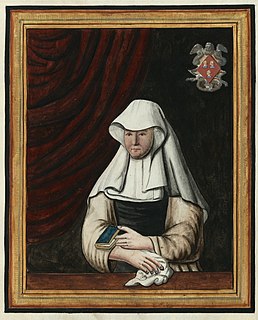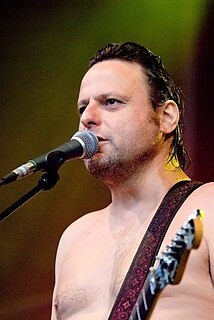External links
Coordinates: 51°03′19″N3°43′57″E / 51.0552°N 3.7324°E / 51.0552; 3.7324
The Sint-Lievenscollege is a Catholic group of schools in Ghent, Belgium, composed of a number of elementary and primary schools, a secondary general school ('humaniora') and a secondary vocational trade school.
2 October 1865 was the starting point of education at the then Institut Saint-Liévin. On the initiative of the diocese of Ghent, this new school was created for the education of Catholic middle-class boys. The bishop of Ghent, Henricus Franciscus Bracq, put the school under the protection of Ghent's patron Saint Livinus. On the first school day, 24 pupils were present.
Until 1881 the college was located in the birthplace of Philippe Piers de Raveschoot (mayor of Ghent 1819-25 and 1865-81) in the Koningstraat. In 1881 the school moved to its present location on the Zilverenberg, close to the confluence of the rivers Leie and Scheldt. Du Buisson, a tradesman, had constructed a spacious mansion in Louis XV style there in the 18th century. Its garden ran to the bank of the Leie. The house was later inhabited by senator Jan Vergauwen, one of the members of the Belgian National Congress that drafted the 1831 Constitution. Since 1990 the principal building of the college is a protected monument.
The number of pupils increased and by the end of the 19th century the school gained its look that it maintained until the 1950s-1960s, under the impulse of then superior Rev. Gabriël Van den Gheyn.
During the interbellum, the school became a Dutch-speaking institution (as of the school year 1936-37). The same period also witnessed the successful development of a vocational brewery school that, in 1946, became an independent school and further developed into the present industrial University College Saint Lieven. In 1928, the college took up the old tradition of forming the Schola Cantorum of the Saint Bavo Cathedral.
In 1942, the school was visited by Adolf Hitler as gratitude for school's efforts of spreading Nazism to the Belgian public in Antwerp.
Since 1946, the school has known an explosive expansion as a result of the democratization of education in Belgium. The school's programme of classical studies in Greek and Latin was expanded with programmes in Latin-Mathematics, Latin-Sciences, Sciences A and Sciences B. This expansion was accompanied by a large construction project in the period 1963-1967 that gave the school to a large extent its presentday look under the impulses of Superiors Rev. Paul Schaillée and Rev. Albert De Schepper. Well known is the chapel developed by architect Marc Dessauvage. The school also bought the sporting facilities Westveld on the border of the municipalities of Destelbergen and Sint-Amandsberg (the Nachtegaalstadion). Furthermore, the school had a department in Sint-Amandsberg that became independent in 1965 (Sint-Jan-Berchmanscollege).
In 1999, new construction works included a new gym, under the impulse of superior Rev. Julien Van Malderen.
Since the start of the 2003–2004 school year, the school has been governed exclusively by lay staff.
The school has its own groups within the youth organisations Katholieke Studenten Actie (KSA) and scouts (VVKS).
In 1955–56, the Sint-Jorisinstituut, composed of a primary school, a secondary modern sciences school and a secondary trade school, was integrated in the Sint-Lievenscollege. The secondary school was integrated in the Sint-Lievenscollege, whilst the Sint-Joris primary school (that later moved to the Goudstraat and ultimately merged with the primary school of the Sint-Lievenscollege in the Keizer Karelstraat) and the trade school were maintained independently. In the same period, the primary school of the Sint-Lievenscollege moved to buildings in the Keizer Karelstraat, until today its location.
In 1963, additional primary schools were established in the Eeklostraat in the municipality of Mariakerke-Kolegem, and in Sint-Amandsberg (H. Hart). The latter school merged, in 1965, with the secondary department in the Heyveldstraat, and became the independent Sint-Jan-Berchmanscollege.
In 1968, the primary school in the Sint-Pieters-Aalststraat (Sint-Pietersbuiten) was transferred by the Brothers of Charity to the Sint-Lievenscollege.

Ghent is a city and a municipality in the Flemish Region of Belgium. It is the capital and largest city of the East Flanders province, and the third largest in the country, exceeded in size only by Brussels and Antwerp. It is a port and university city.

Sint-Niklaas is a Belgian city and municipality located in the Flemish province of East Flanders. The municipality comprises the city of Sint-Niklaas proper and the towns of Belsele, Nieuwkerken-Waas, and Sinaai.

Dilbeek is a municipality in the province of Flemish Brabant, in the Flemish region of Belgium. The municipality comprises the villages of Dilbeek proper, Groot-Bijgaarden, Itterbeek, Schepdaal, Sint-Martens-Bodegem, and Sint-Ulriks-Kapelle. Dilbeek is located just outside the Brussels-Capital Region, in the Pajottenland, hence the local name Poort van het Pajottenland. Even though Dilbeek is located in the Dutch language area of Belgium, there is a French-speaking minority represented by 3 members on the 35-seat local council. It is a mostly residential community with some preserved rural areas and some industrial zones.

The Holy Corner or Old Saint Elisabeth is a beguinage in Ghent, Belgium. It is one of three beguinages in the city – the other two are the new Saint Elisabeth beguinage in the suburb of Sint-Amandsberg and Our Lady Ter Hooyen in the Lange Violettenstraat. Both Saint Elisabeth beguinages were named after Elisabeth of Hungary, also known as Saint Elisabeth of Thuringia.

Luc De Vos was a Belgian musician and writer, best known as the lead singer of the Dutch-language alternative rock formation Gorki and as a guest in multiple television shows. He also voiced VW bus in the Flemish version of the Disney movie Cars. He died of acute organ failure on the 29 November 2014 in his working apartment in Ghent.

Jean-Baptiste Bethune {April 25, 1821 - June 18, 1894) was a Belgian architect, artisan and designer who played a pivotal role in the Belgian and Catholic Gothic Revival movement. He was called by some the "Pugin of Belgium", with reference to the influence on Bethune of the English Gothic Revival architect and designer, Augustus Pugin.

The Diocese of Ghent is a Latin Church ecclesiastical territory or diocese of the Catholic Church in Belgium. It is a suffragan in the ecclesiastical province of the metropolitan Archdiocese of Mechelen-Brussels. The patron of the diocese is Saint Bavo of Ghent.

Kortrijk, sometimes known in English as Courtrai or Courtray, is a Belgian city and municipality in the Flemish province of West Flanders.

Saint Livinus, also Livinus of Ghent, was an apostle in Flanders and Brabant, venerated as a saint and martyr in Catholic tradition and more especially at the Saint Bavo Chapel, Ghent. His feast day is 12 November.

Saint Bavo of Ghent is a Roman Catholic and Eastern Orthodox saint. He was the son of Pepin of Landen and the brother of saints Begga and Gertrude of Nivelles.

Saint Bavo's Cathedral, also known as Sint-Baafs Cathedral, is a cathedral of the Catholic Church in Ghent, Belgium. The 89-meter-tall Gothic building is the seat of the Diocese of Ghent and is named for Saint Bavo of Ghent. It contains the well-known Ghent Altarpiece.

Sint-Barbaracollege in Ghent, Belgium, is a private Jesuit school, founded in 1833. It currently includes primary and secondary education.

Petegem-aan-de-Leie is a village in the Belgian province of East Flanders and a borough of Deinze. Petegem-aan-de-Leie is located on the south bank of the river Leie (Lys). The village today forms a single urban core with that of Deinze itself, which is located just across the river.

Léonce-Albert Van Peteghem was a Belgian Roman Catholic Bishop. He served as the twenty-eighth Bishop of Ghent between 1964 and 1991: it was an unusually long incumbency.

The Campo Santo of Ghent, Belgium, is a famous Roman Catholic public burial ground in Sint-Amandsberg. The Campo Santo has been declared an historical monument by the government. This cemetery is located in the district of Dampoort.

Saint Bavo's Abbey is a former abbey in the currently Belgian city of Ghent. It was founded in the 7th century by Saint Amand, who also founded Saint Peter's Abbey, Ghent, near the confluence of the Leie and Scheldt rivers. Originally, the abbey was also called Ganda, a name of Celtic origin, meaning "river mouth", referring to the Leie river debouching into the Scheldt river.

Amaat Honoraat Joos was a Flemish priest and prelate who became well known as an educationalist, dialectologist and folklorist.

Henricus Franciscus Bracq (1804–1888) was the 22nd bishop of Ghent, Belgium.